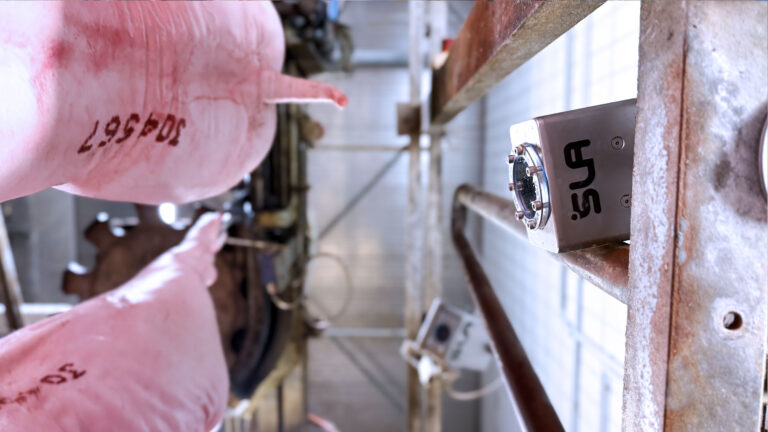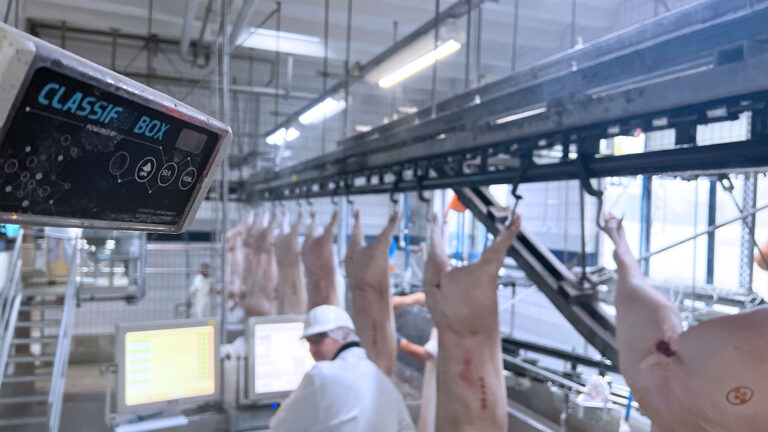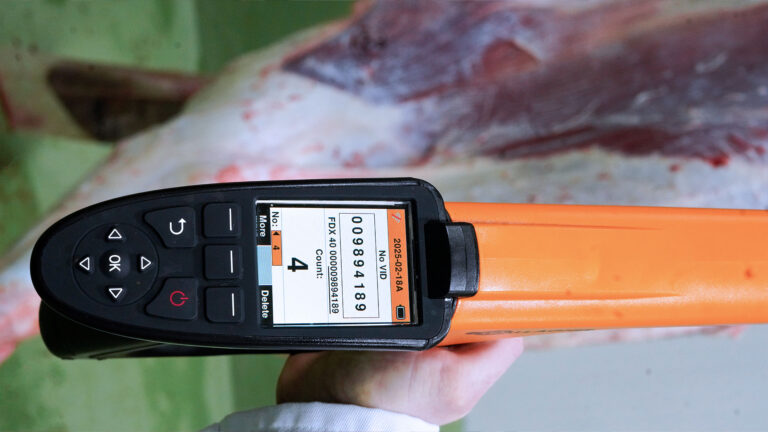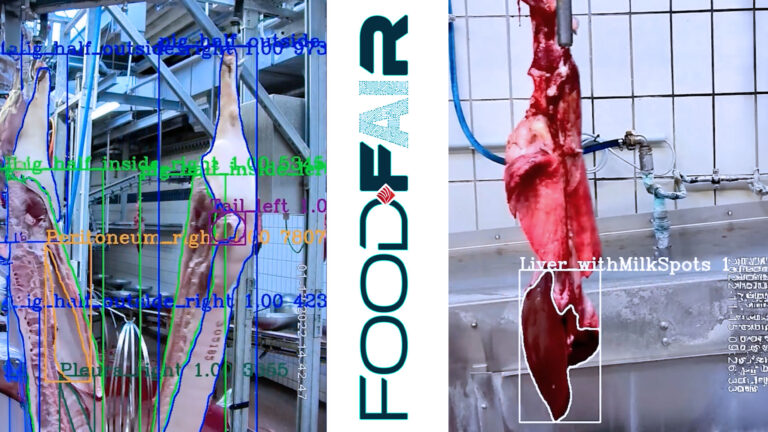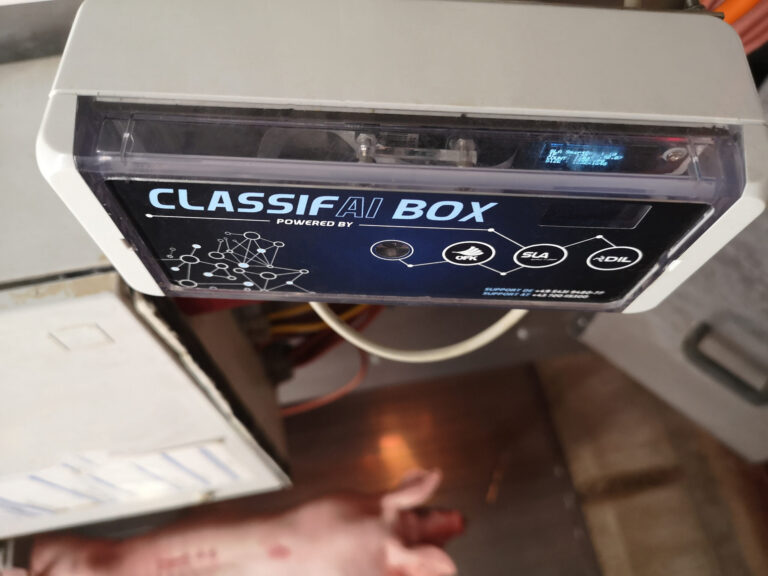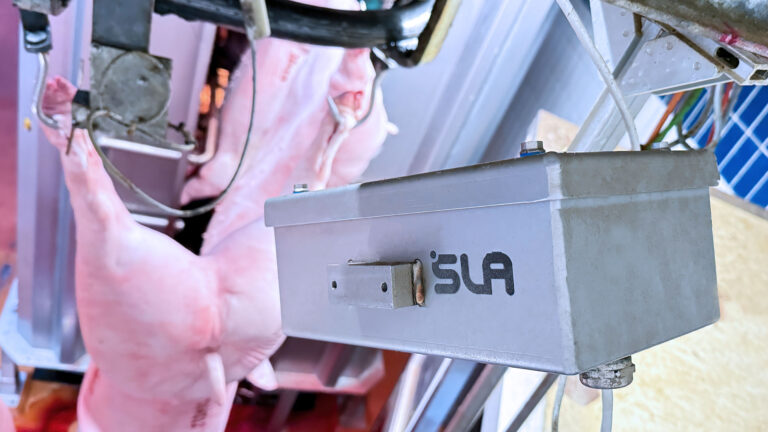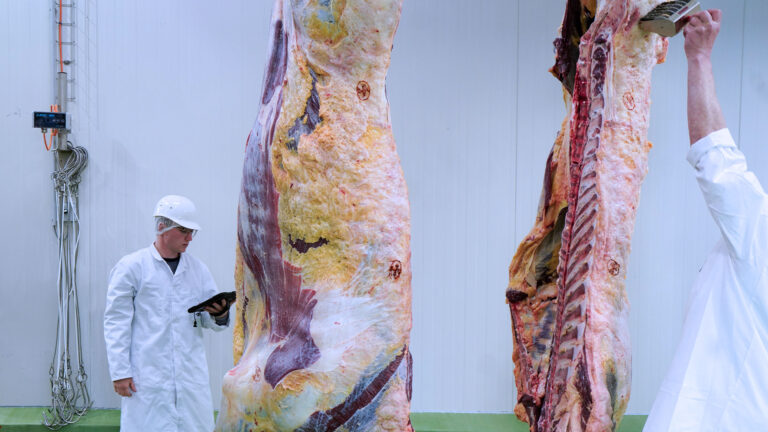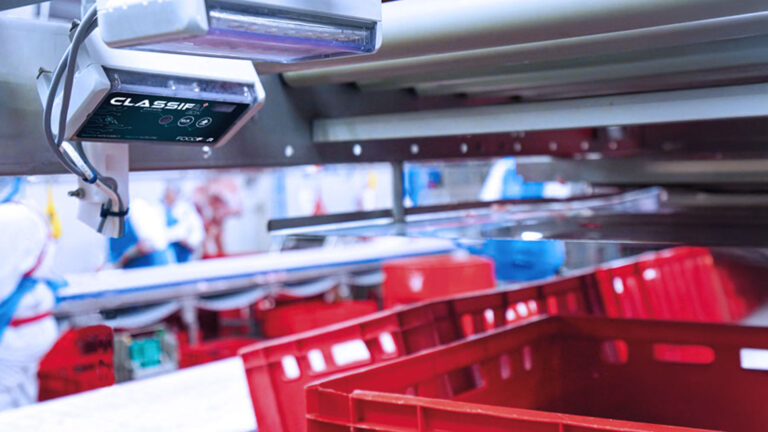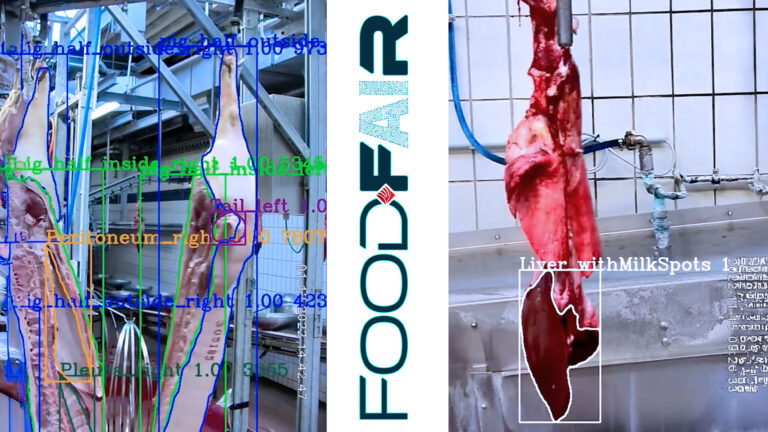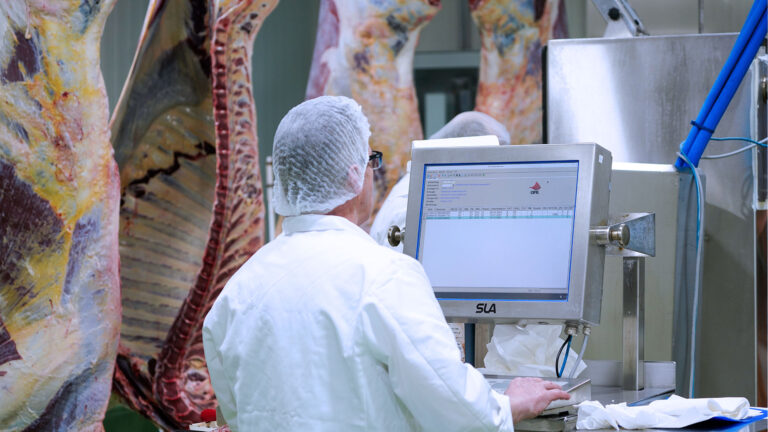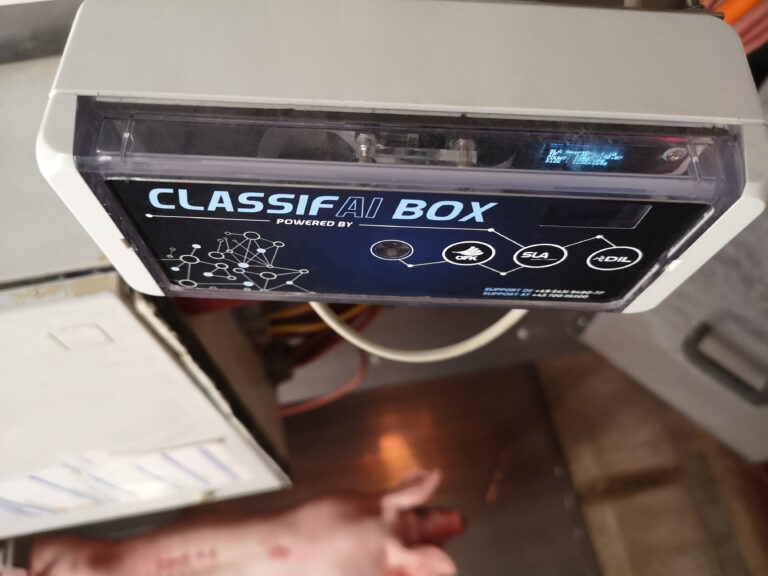Our AI solutions
Tail recognition
Automatically record animal welfare indicators – objectively, documented, and auditable.
Your Challenge Challenge Challenge
When animal welfare is mandatory, visual inspection cannot be the only solution.
Documenting tail lengths and injuries in pigs is becoming increasingly mandatory—yet many farms continue to record this data manually or not at all. Visual inspections are labor-intensive, prone to error, and usually only possible on a random basis. At the same time, there is a lack of reliable data for programs, inspections, and animal welfare officers.
Our Solution Solution Solution
AI-supported tail detection
FOODFAIR's AI-supported tail detection system automatically detects and documents the condition of tails, including any pathological abnormalities. The solution automatically provides data for authorities, QA systems, and sustainability programs—image-based, traceable, and in real time.
What the solution does
- Automated recording of tail length for every pig carcass
- Classification from complete amputation to long, intact tails (e.g., curly tail)
- Recognition and documentation of pathological changes
- Multi-camera system for capturing images from multiple perspectives
- Integration with ERP/QS systems and notification function for specialist personnel or animal welfare officers
Your benefits
How automated tail detection is changing operations
The AI solution creates a reliable, objective basis for animal welfare documentation and programs such as Initiative Tierwohl (Animal Welfare Initiative) or AMA quality seal. It reduces personnel costs, improves traceability, and actively supports the company's animal welfare profile—both internally and externally.
Fully automated control
No visual inspection necessary – complete, systematic recording of every animal.
Reliable animal welfare data
Measurements of tail docking and changes – useful for quality assurance, farmers, and authorities.
Documentation instead of discussion
Image documentation and data provide clarity in the event of queries, complaints, or inspections.
Strengthen reputation security
Contribution to animal welfare goals and brand programs – with demonstrable impact.
Basis for further evaluations
The data helps with training, evaluations, and long-term animal welfare strategy.
Your possibilities – our goal
Making animal welfare visible – not just promising it
With AI-supported tail detection, you can systematically record animal welfare-related characteristics directly on the slaughter line. The data can be reused for feedback to farmers, for transport analyses, or as documentation for standard programs.
In combination with additional modules such as ear recognition or organ diagnosis, a comprehensive animal welfare documentation system is created – data-supported, automated, and connectable.
- Complete and standardized tail classification for every animal
- Automated differentiation between slaughter artifacts and pathological changes
- Reliable proof of animal welfare through image and data documentation
- Relief for specialist staff and animal welfare officers
- Contribution to greater transparency and animal welfare in the meat industry
The next step starts here
Measure animal welfare visibly – with AI-supported tail detection
Whether for internal QS, external audits, or animal welfare programs, FOODFAIR turns obligations into a reliable digital solution. We would be happy to advise you personally on integration and scaling.
Let's work together to find out what solutions your business really needs—today, tomorrow, and the day after tomorrow.
5 common questions about tail recognition with AI:
What lengths and features does AI recognize?
The solution detects complete, partially amputated, or injured tails, including pathological changes.
Are all animals recorded or just random samples?
Each animal is recorded and classified fully automatically – no random sampling necessary.
Where does the data go?
The results are saved and can be fed into QS systems or exported.
How does the specialist staff find out about any issues?
Any abnormalities are flagged in the system and can be reported directly to animal welfare officers.
Can the solution be combined with other modules?
Yes – e.g. with ear identification, organ identification or RFID ear tag recognition.

